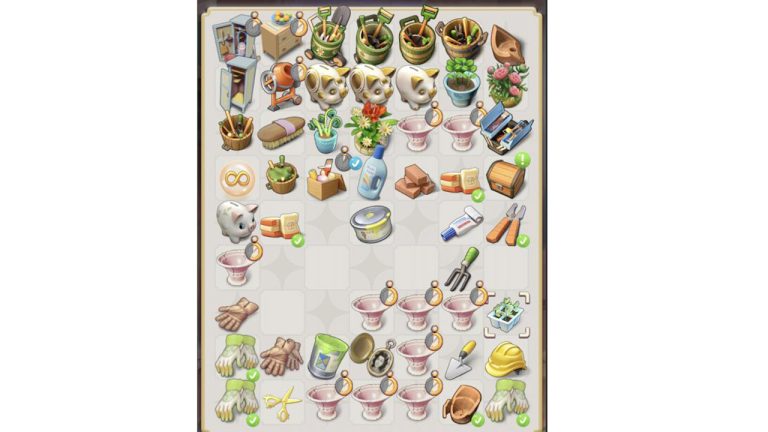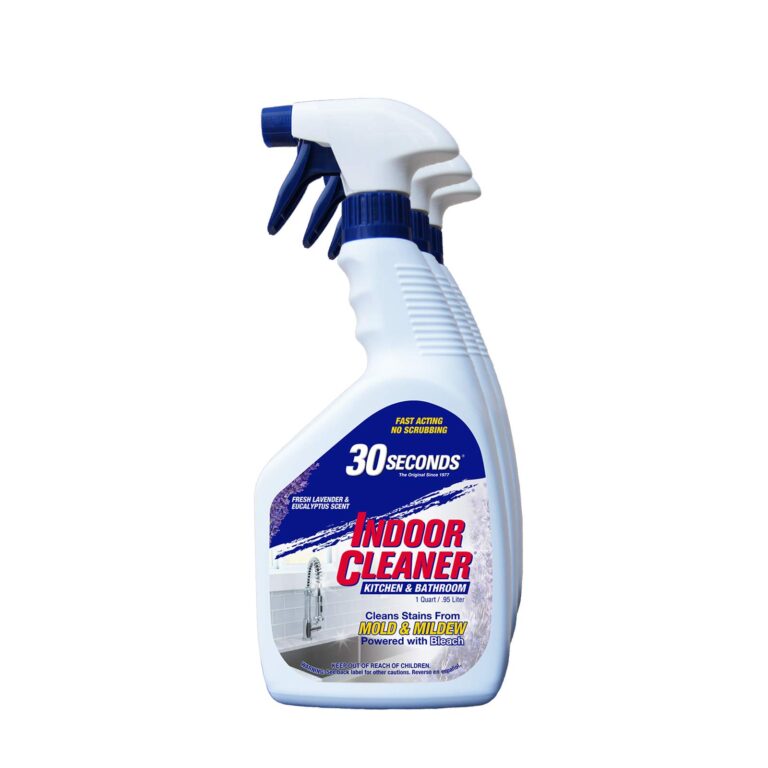Can I Plaster Over Old Wallpaper?: Expert Tips and Tricks
Yes, you can plaster over old wallpaper. It might not be ideal, though.
Plastering over old wallpaper can save time and effort. But, it also carries risks. If the wallpaper isn’t secure, the plaster may crack or peel. The process requires careful preparation and attention to detail. This blog will guide you through the steps and considerations.
Learn the pros and cons before you decide. Understanding these factors can help you achieve the best result. Let’s explore the best practices and common pitfalls.

Credit: agirlcandoit.wordpress.com
Evaluating The Wallpaper Condition
Before you decide to plaster over old wallpaper, it’s essential to evaluate its condition. You might be wondering, “Can I just plaster over it?” Well, the answer depends on several factors. Proper evaluation will help ensure a smooth plastering process and a flawless finish. Let’s walk through this step-by-step.
Check For Peeling
First things first, you need to check if the wallpaper is peeling off. Take a close look at the edges and corners. If you see any loose sections, it’s a sign that the wallpaper might not be a stable base for plaster. Peeling wallpaper can lead to plaster cracking and falling off in the future. Here’s a quick way to test:
- Gently tug at the corners of the wallpaper.
- If it lifts easily, it might be better to remove it.
- For areas that are firmly attached, consider using adhesive to secure any loose sections.
Remember, a stable base is crucial for a smooth finish. So, take your time and ensure there are no loose ends.
Assess Moisture Levels
Next, let’s talk about moisture. Moisture is a common enemy in home improvement projects, and it can wreak havoc on your plastering job. Moisture behind the wallpaper can cause it to bubble, peel, and lead to mold growth. Here’s how to assess moisture levels:
| Method | Instructions |
|---|---|
| Visual Inspection | Look for any discoloration or damp patches on the wallpaper. These are tell-tale signs of moisture issues. |
| Touch Test | Run your hand over the wallpaper. If it feels damp, you might have a moisture problem. |
| Moisture Meter | For a more accurate assessment, use a moisture meter. These devices can give you a precise reading of the moisture content. |
If you discover any moisture problems, it’s best to address them before moving forward. Fix any leaks, improve ventilation, and let the area dry out completely. Plastering over damp wallpaper is a recipe for disaster.
By carefully evaluating the condition of your wallpaper, you can make an informed decision. This ensures your plastering project goes off without a hitch and stands the test of time. So, roll up your sleeves, take a close look, and get ready to transform your walls!

Credit: www.reddit.com
Preparing The Surface
Before you start plastering over old wallpaper, it’s crucial to prepare the surface properly. This step is essential to ensure a smooth and long-lasting finish. If you skip this, you may end up with a bumpy and uneven surface that could peel off over time. Don’t worry; we’ve got you covered with simple, easy-to-follow steps. Let’s dive in!
Clean The Wallpaper
First things first, you need to clean the wallpaper. Dust, dirt, and grease can affect the adhesion of the plaster. Start by using a soft brush or a vacuum with a brush attachment to remove any loose dust and dirt. For greasy spots, you can use a mild detergent mixed with warm water. Wipe the wallpaper gently with a sponge or cloth, being careful not to soak it. Let it dry completely before moving on to the next step.
- Use a soft brush or vacuum
- Clean greasy spots with mild detergent
- Let it dry completely
Repair Damaged Areas
Now, it’s time to inspect the wallpaper for any damage. Look for tears, bubbles, or loose sections. These areas need to be fixed before you can plaster over them. For small tears and bubbles, you can use wallpaper adhesive to stick them back in place. If there are large sections that are loose or damaged, you might need to cut them out and patch the area with a piece of drywall or filler. Smooth out the patched area and ensure it’s level with the rest of the wall.
- Inspect for tears, bubbles, and loose sections
- Use wallpaper adhesive for small repairs
- Patch large damaged areas with drywall or filler
- Smooth out and level the surface
Remember, taking the time to properly prepare the surface can make a huge difference in the final result. Think of it as laying a strong foundation for a house; without it, the structure won’t hold up. So, roll up your sleeves, put on your favorite playlist, and get to work. Your walls will thank you!
Choosing The Right Plaster
Choosing the right plaster can be a daunting task, especially when dealing with old wallpaper. The right plaster ensures a smooth, durable finish. It can also help in concealing the old wallpaper effectively. This section will guide you through the various types of plaster available and the best options for plastering over old wallpaper.
Types Of Plaster
There are several types of plaster to consider. Each has its own unique properties and uses.
Gypsum plaster is common. It sets quickly and provides a smooth finish. Lime plaster is more traditional. It is breathable and flexible. Cement plaster is another option. It is durable and moisture-resistant. Each type has its pros and cons.
Best Plaster For Wallpaper
Choosing the best plaster for wallpaper is crucial. Gypsum plaster works well. It adheres easily and gives a smooth surface. It is also easy to apply and dries quickly.
Lime plaster is another good choice. It allows walls to breathe and prevents mold. It is flexible and can adapt to minor movements. Cement plaster is suitable for high-moisture areas. It is robust and moisture-resistant, making it perfect for bathrooms or kitchens.
Consider the room’s needs and the type of wallpaper. This will help you choose the best plaster for the job.
Gathering Essential Tools
Before starting the task of plastering over old wallpaper, gathering the right tools is essential. Proper preparation ensures a smooth, efficient process. It helps in avoiding unnecessary delays and complications. Let’s go over the necessary tools and safety gear you’ll need.
Tools And Materials Needed
You’ll need a few key items to get started. First, a utility knife is crucial. It helps in cutting and trimming the wallpaper. A wallpaper scraper will aid in removing any loose or peeling sections. A plastering trowel is necessary for applying plaster. Ensure you have a bucket for mixing plaster. Use a mixing paddle to get a consistent mixture. Sandpaper is needed for smoothing out the plaster once it dries. Don’t forget to have a sponge and clean water on hand for cleaning.
Safety Gear
Safety is paramount during any DIY project. Wear safety goggles to protect your eyes from dust and debris. A dust mask will help you avoid inhaling fine particles. Gloves are essential to protect your hands from chemicals and rough surfaces. Ensure you have a sturdy ladder if you need to reach higher areas. Wearing long sleeves and pants adds an extra layer of protection.
Applying A Primer
Applying a primer is a crucial step before plastering over old wallpaper. It ensures that the plaster adheres properly and provides a smooth finish. Without priming, the plaster may not bond well, leading to peeling or cracking. Let’s delve into the importance of priming and how to apply the primer effectively.
Importance Of Priming
Priming prepares the old wallpaper surface for the new plaster. It seals the wallpaper, preventing moisture from seeping through. This helps in avoiding bubbles or blisters in the plaster. Priming also creates a uniform surface, making the plaster application smoother. It significantly enhances the durability and longevity of the plaster.
How To Apply Primer
First, clean the wallpaper surface to remove dust and dirt. Use a damp cloth for this purpose. Allow the surface to dry completely before moving to the next step. Choose a high-quality primer suitable for wallpaper surfaces.
Next, pour the primer into a paint tray. Use a roller or brush to apply the primer evenly over the wallpaper. Start from the top and work your way down. Ensure that the primer covers every inch of the wallpaper.
Allow the primer to dry as per the manufacturer’s instructions. This usually takes a few hours. Once dry, inspect the surface for any missed spots. Apply a second coat if necessary for better coverage. After the primer is fully dry, you are ready to apply the plaster over the wallpaper.
Plastering Techniques
Plastering over old wallpaper can seem daunting. With the right techniques, you can achieve a smooth finish. It’s essential to follow proper steps. This ensures the plaster adheres well. Let’s explore these plastering techniques.
First Coat Application
Start with a bonding agent. This helps the plaster stick better. Apply the first coat of plaster thinly. Use steady, even strokes. Ensure the coat covers the wallpaper completely. Allow this coat to dry slightly. It should be firm, but not fully dry.
Smooth Finish Tips
For a smooth finish, patience is key. Apply the second coat thinly. Use a trowel to spread it evenly. Work in small sections. This helps maintain control. Smooth out any ridges or bumps as you go. Check for any missed spots. Fill them in carefully.
After the plaster sets, sand the surface lightly. This removes any small imperfections. Your wall should now be smooth and ready for painting.
Drying And Curing
Plastering over old wallpaper can lead to issues if not done correctly. Ensure the wallpaper is secure and clean before starting. Proper drying and curing are crucial for a smooth finish.
Plastering over old wallpaper can be tricky. One of the most important steps is drying and curing. This step ensures your plaster stays strong and lasts long. Proper drying and curing prevent problems like cracks and damp spots.Drying Time
The drying time of plaster is crucial. It depends on the room’s humidity and temperature. Typically, plaster takes about 24 to 48 hours to dry. But, it can take longer if the weather is cold or damp. Good ventilation speeds up the drying process. Open windows or use fans to help the plaster dry faster.Avoiding Cracks
Cracks can ruin your plastered wall. To avoid them, you must let the plaster dry slowly. Fast drying can cause the plaster to crack. Keep the room temperature stable. Do not use heaters to speed up drying. Moisture levels should be controlled. Check the plaster regularly for any signs of cracks. If you see any, address them immediately. “`
Credit: www.reddit.com
Painting Or Wallpapering Over Plaster
So, you’ve decided to refresh your room but not sure whether to paint or wallpaper over plaster? No worries! Both options can breathe new life into your walls. The key is to choose what suits your style and room. Let’s dive into the details!
Choosing Paint Or Wallpaper
When it comes to refreshing your walls, you have two main choices: paint or wallpaper. But which one is right for you?
| Option | Pros | Cons |
|---|---|---|
| Paint |
|
|
| Wallpaper |
|
|
Both paint and wallpaper have their perks. If you love changing your décor often, paint might be your best bet. However, if you’re looking for a long-term solution with stylish designs, wallpaper could be the way to go.
Final Touches
Regardless of your choice, adding the final touches can make a huge difference. Here are a few tips:
- Prep your walls: Clean and smooth out any bumps or cracks.
- Choose quality materials: Invest in good paint or wallpaper for a professional look.
- Consider the room: Lighter colors and patterns can make a small room look bigger.
- Accessorize: Match your walls with complementary décor items like cushions or rugs.
Remember, the goal is to make your space feel cozy and inviting. Whether you choose paint or wallpaper, a little effort goes a long way. So, roll up your sleeves and let your creativity shine!
Frequently Asked Questions
What Happens If You Plaster Over Wallpaper?
Plastering over wallpaper can cause poor adhesion and an uneven surface. The plaster may crack or peel. Remove wallpaper first for best results.
How Do You Cover Up Old Wallpaper Without Removing It?
To cover old wallpaper, clean it, apply a primer, then use wallpaper liner. Finally, paint or apply new wallpaper.
Do You Have To Remove All Wallpaper Before Plastering?
Yes, you must remove all wallpaper before plastering. Wallpaper can prevent plaster from adhering properly. Clean the wall thoroughly for best results.
Can You Skim Coat Over Old Wallpaper?
Yes, you can skim coat over old wallpaper, but it’s best to remove the wallpaper first for optimal results.
Conclusion
Plastering over old wallpaper can be tricky but doable. Ensure the wallpaper is secure. Clean the surface thoroughly. Apply primer for better adhesion. Consider the wallpaper’s condition. Sometimes, removing it is best. Always test a small area first. Consult a professional for large projects.
This ensures a smooth, lasting finish. With care, you can achieve great results. Remember, patience is key. Happy plastering!

My name is Maria, A professional merge game player with years of experience mastering games like Merge Dragons, Merge Gardens, Merge Mansion, and more. My passion for uncovering the best strategies, solving tricky puzzles, and discovering hidden secrets led her to create MergeGameplay.com.






